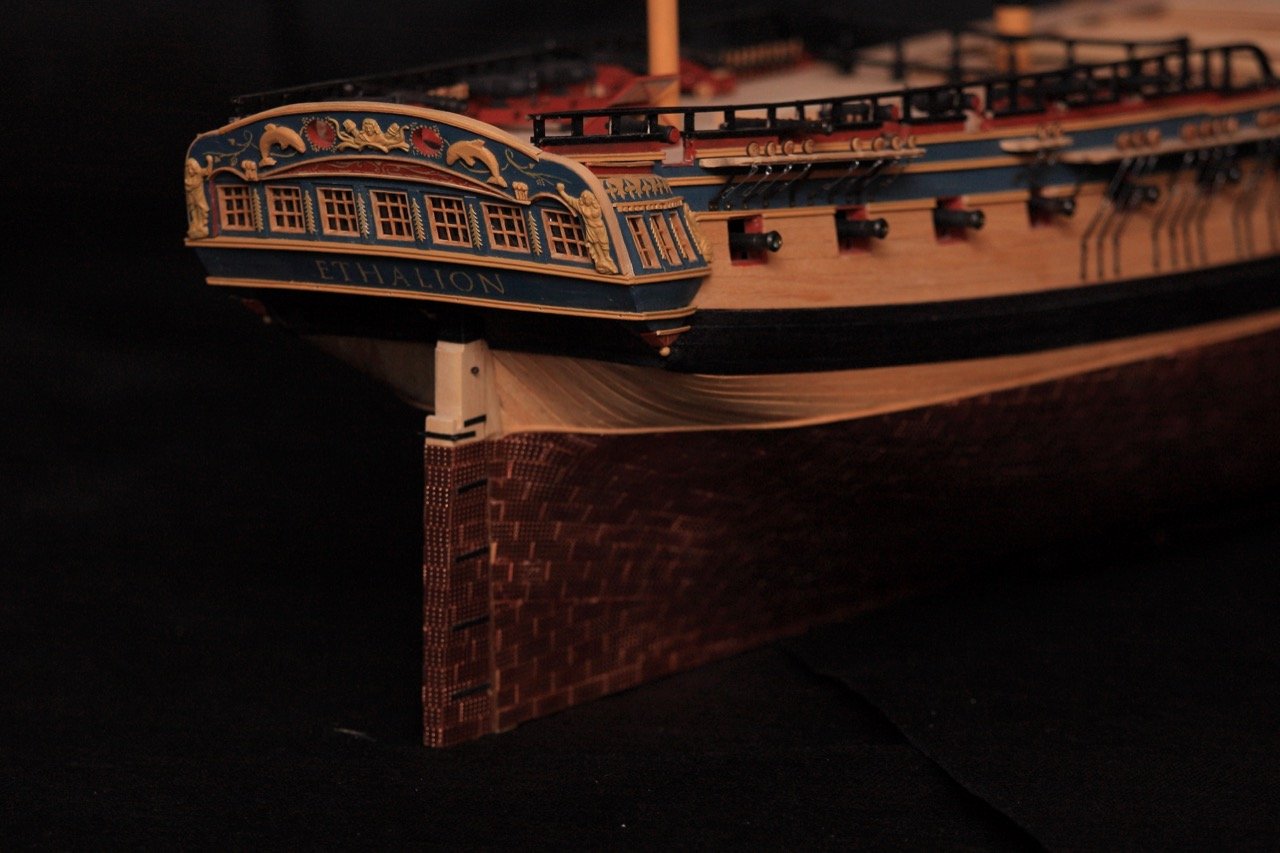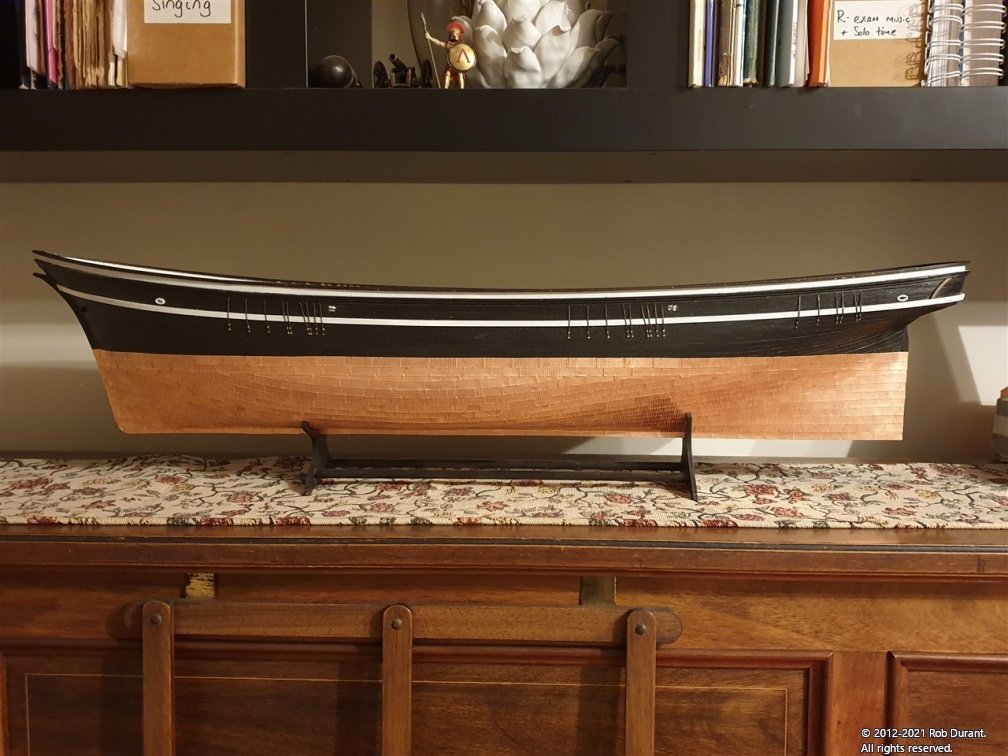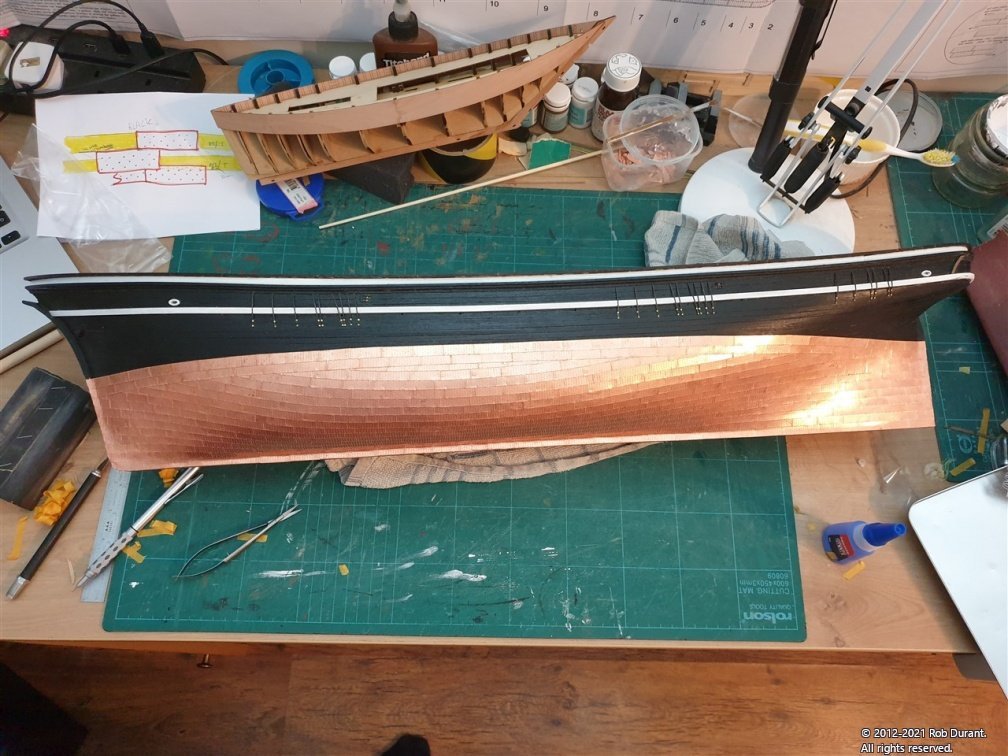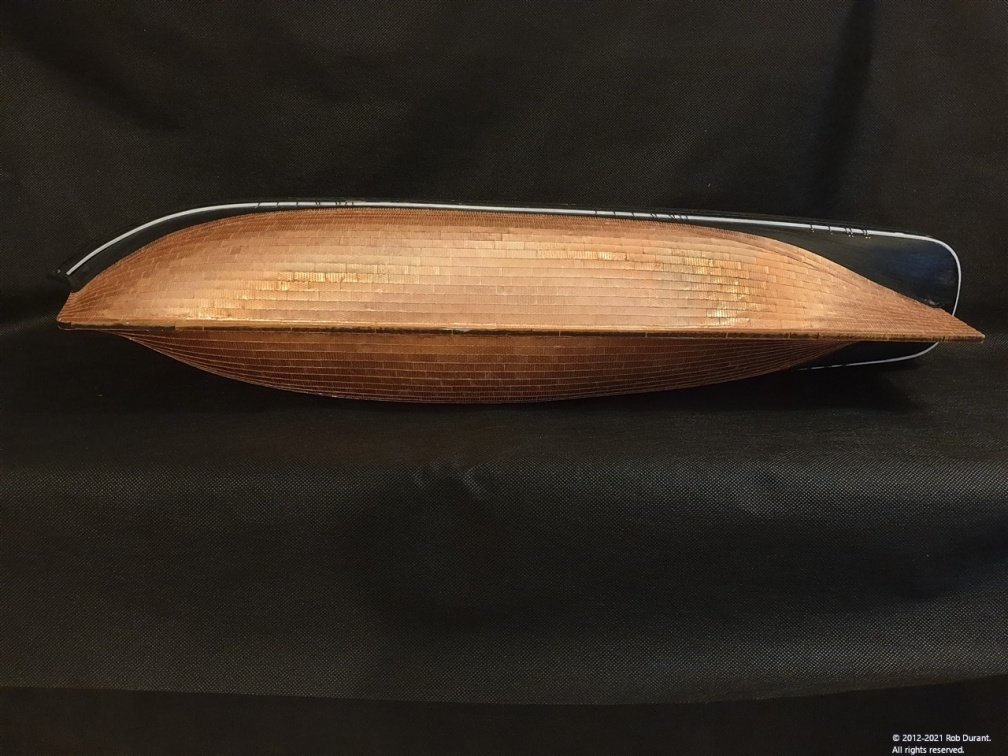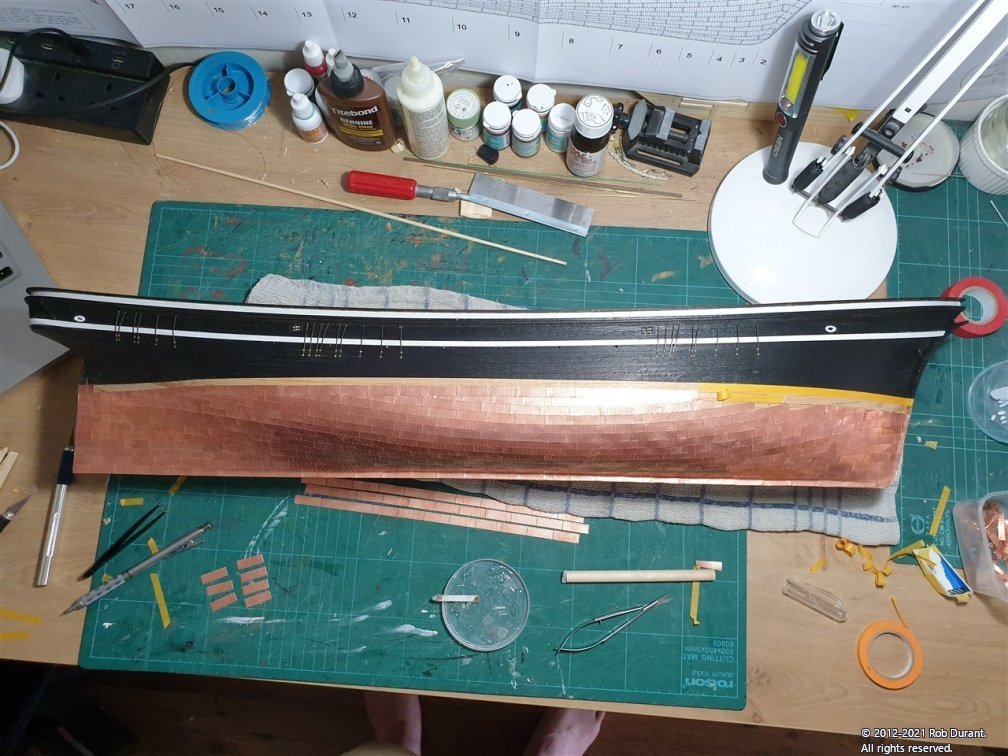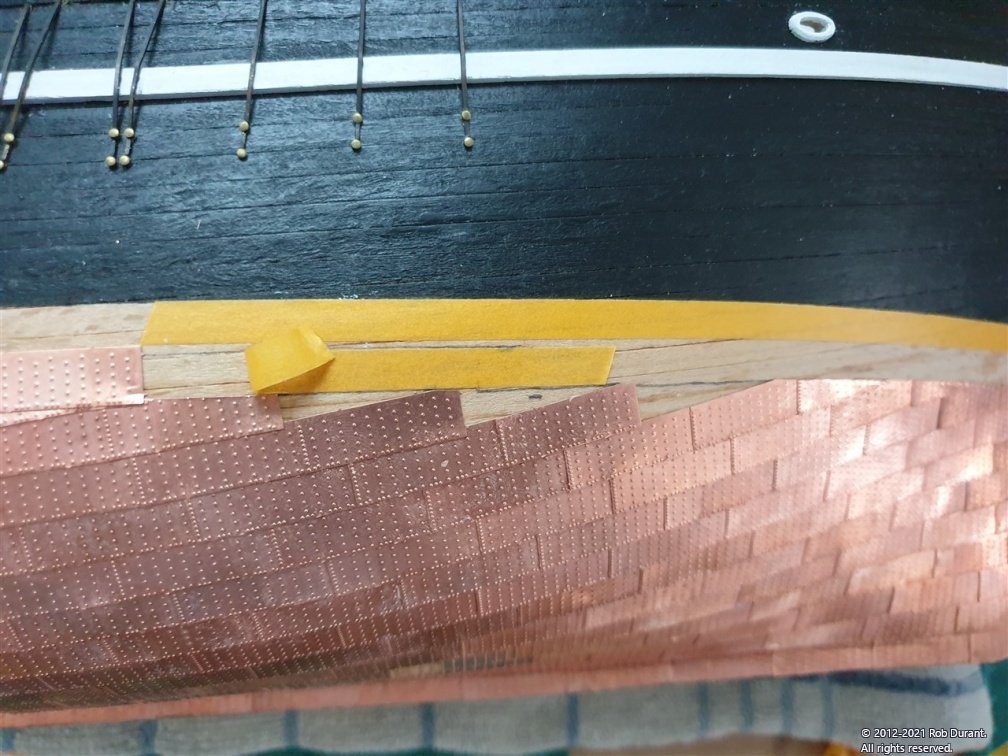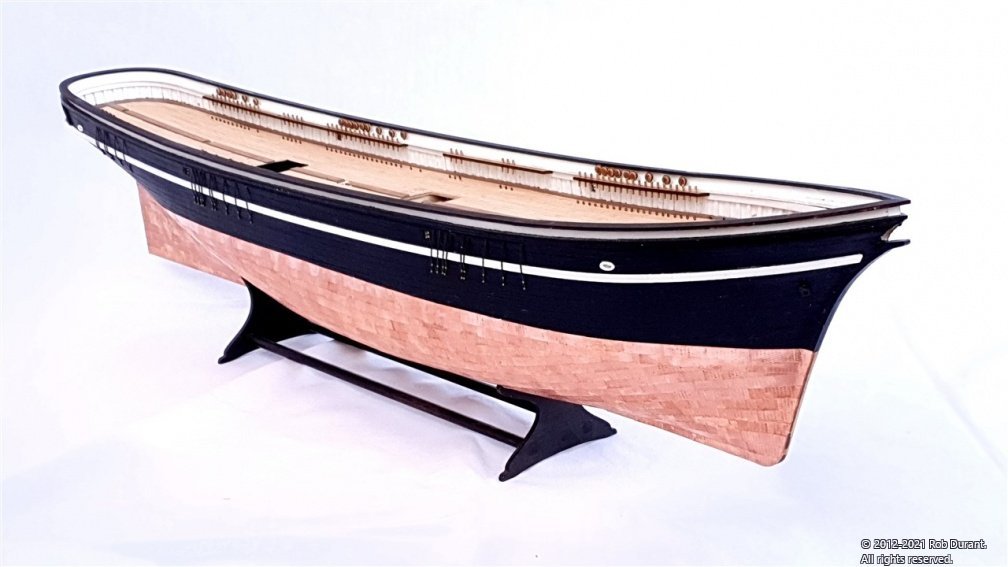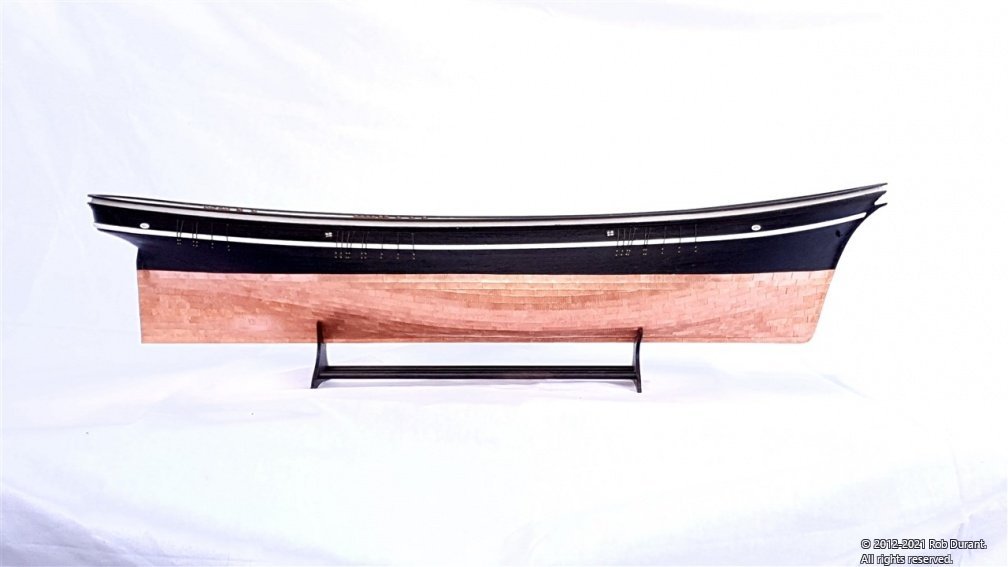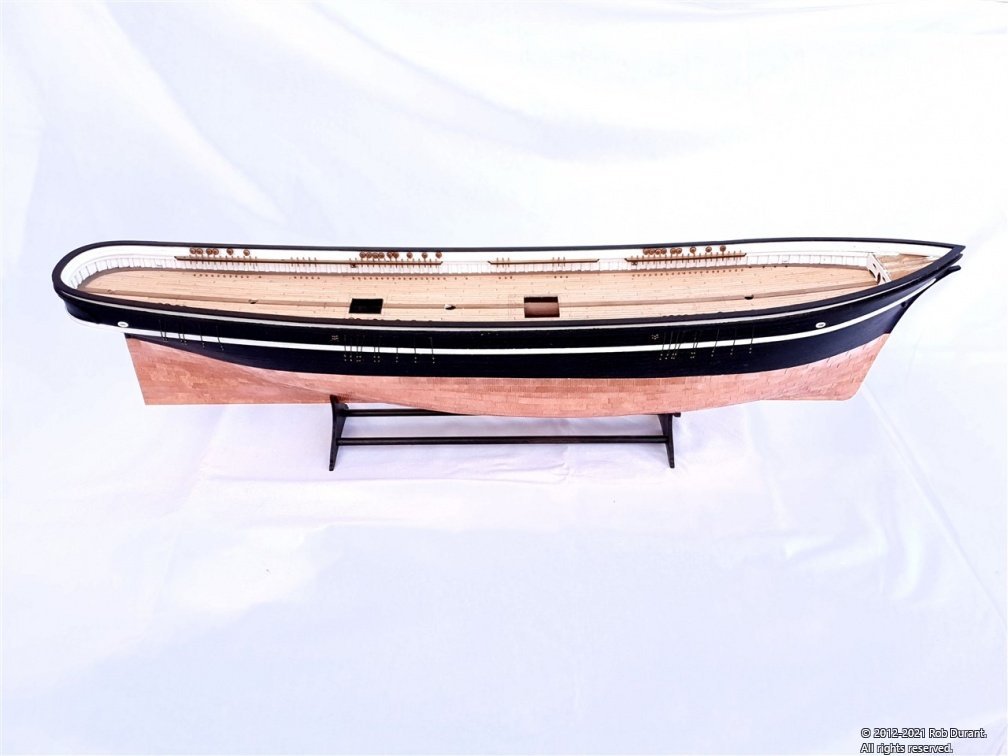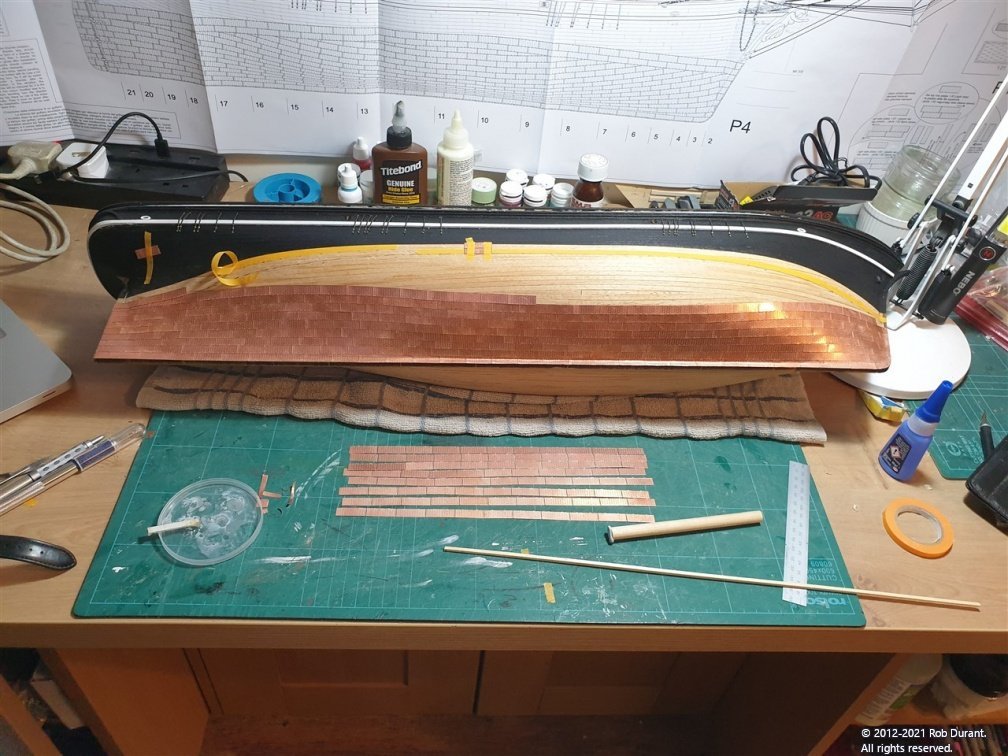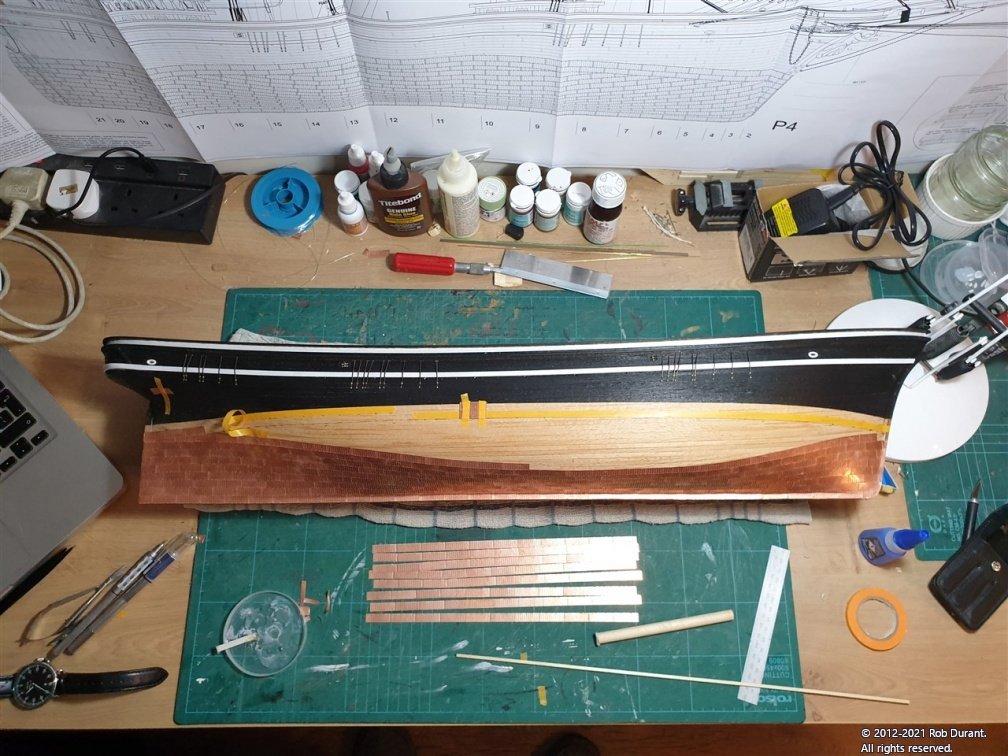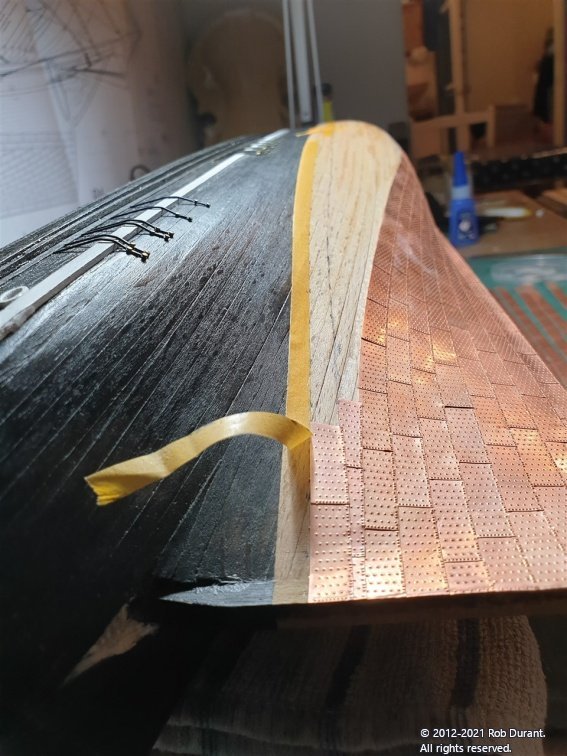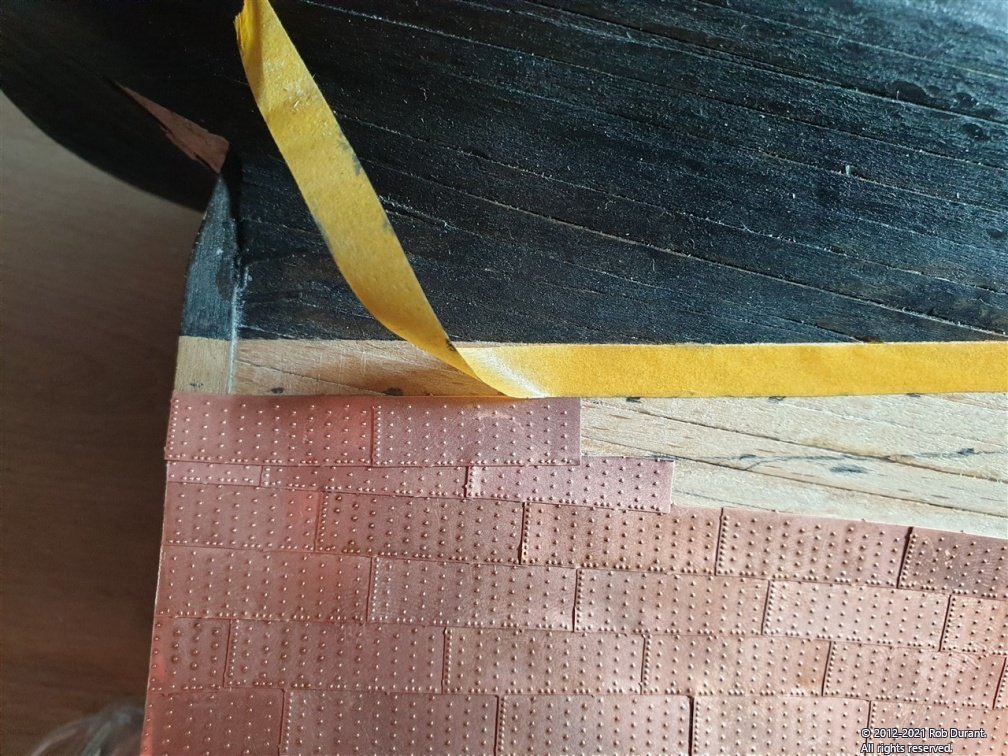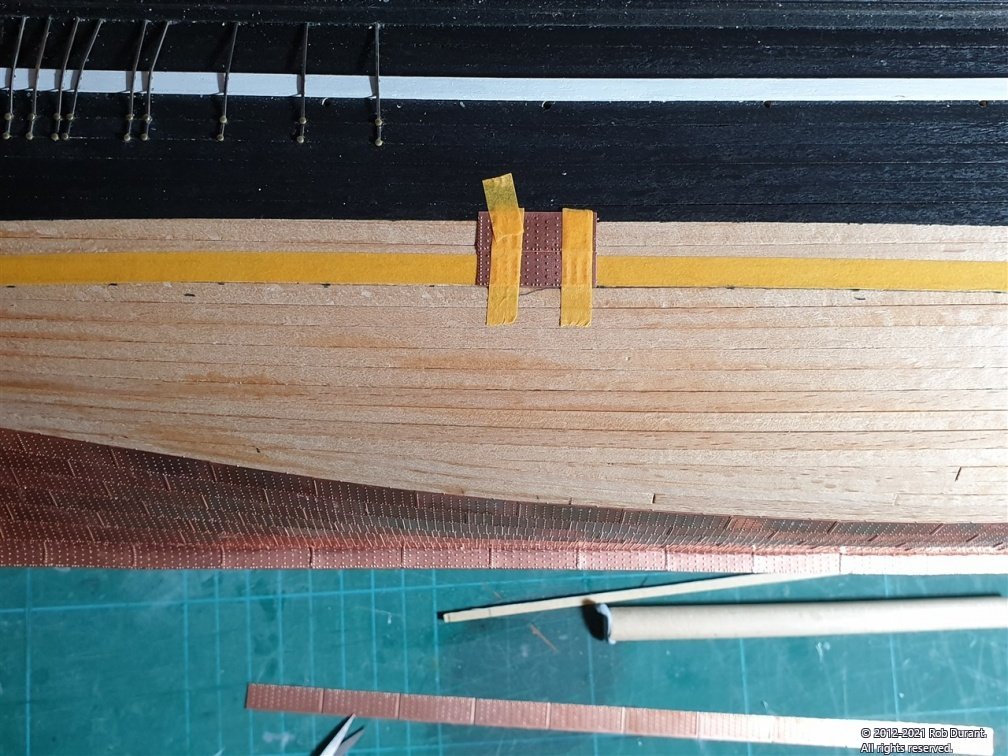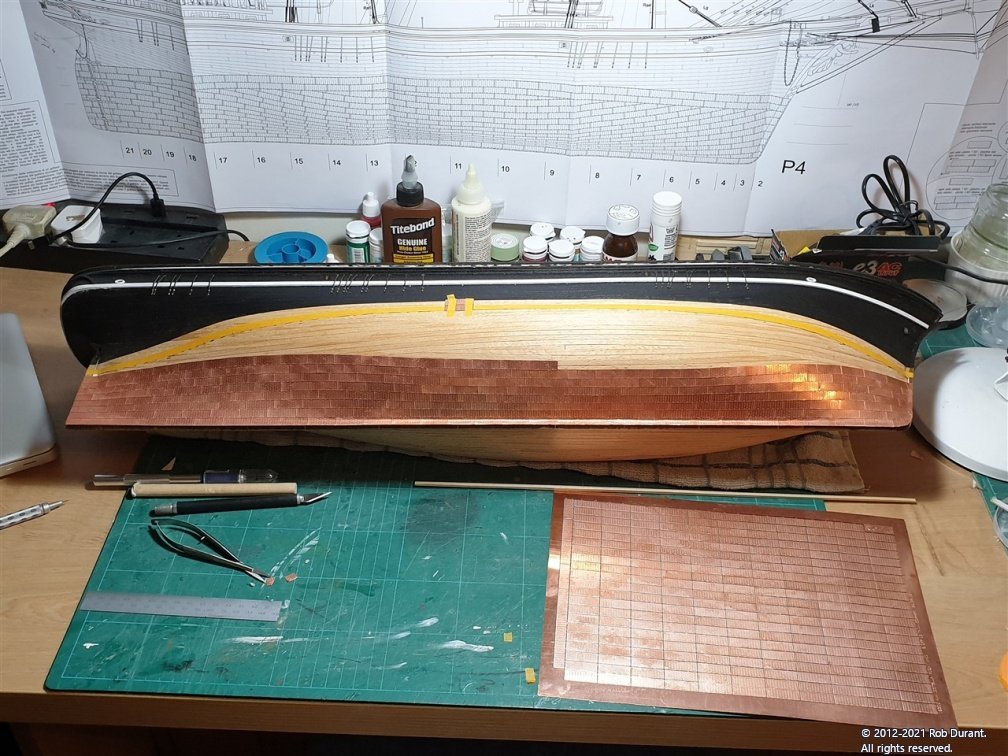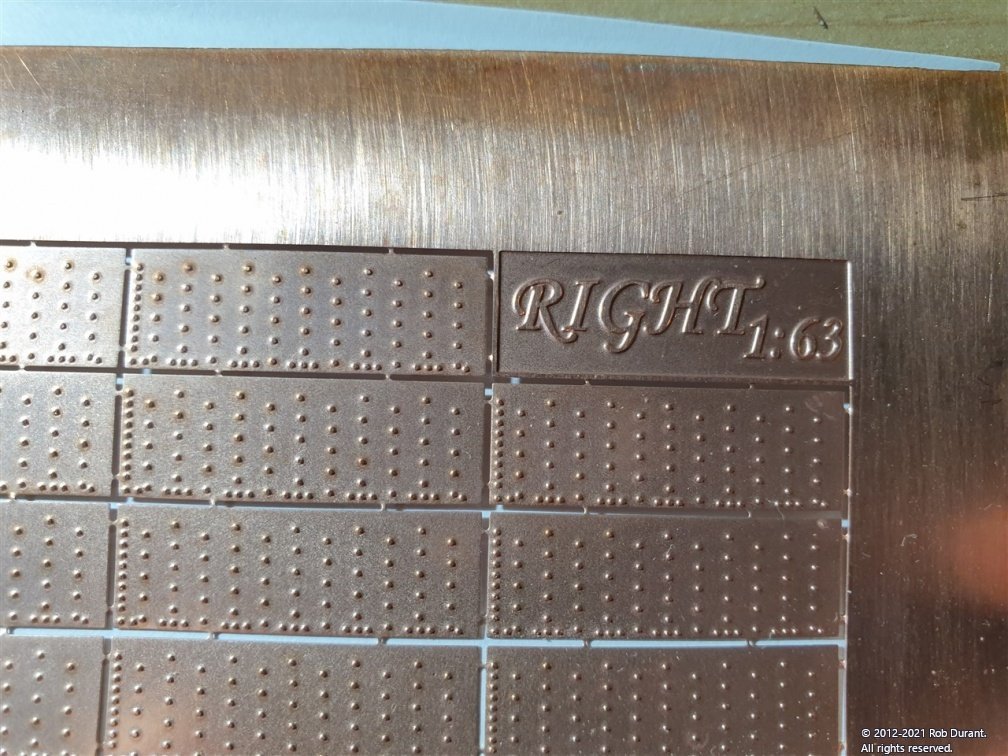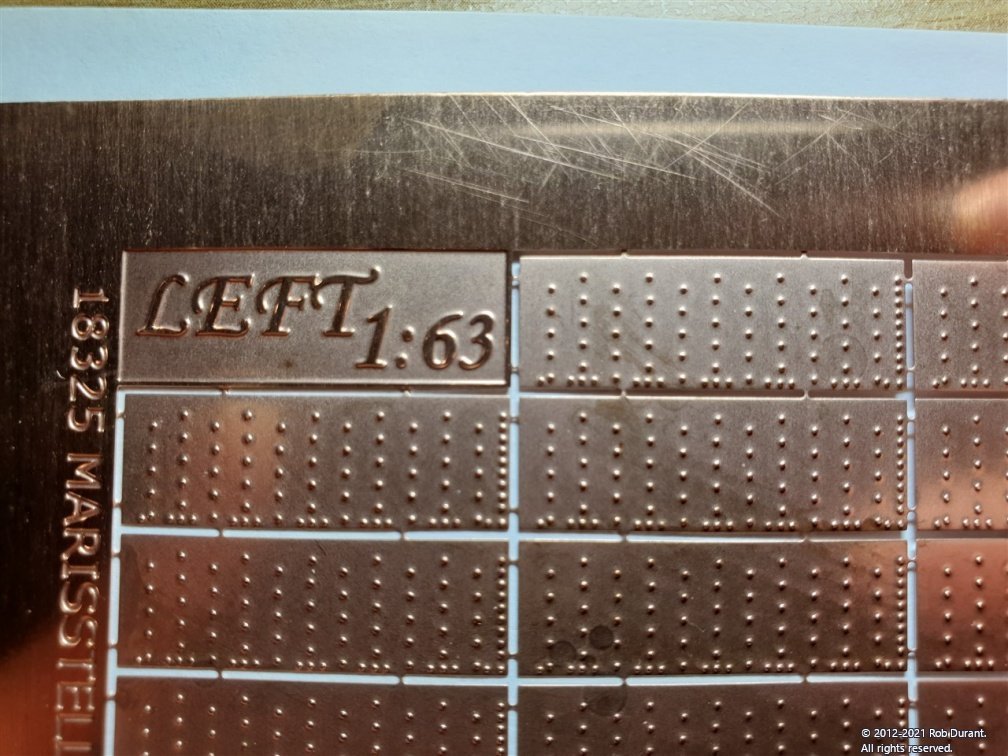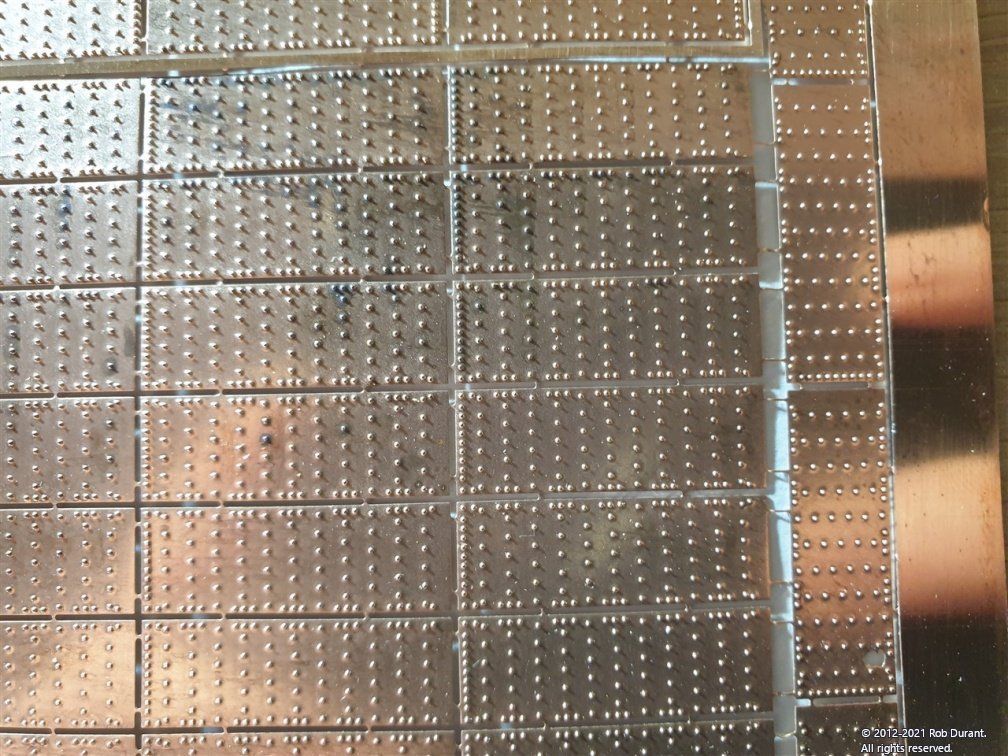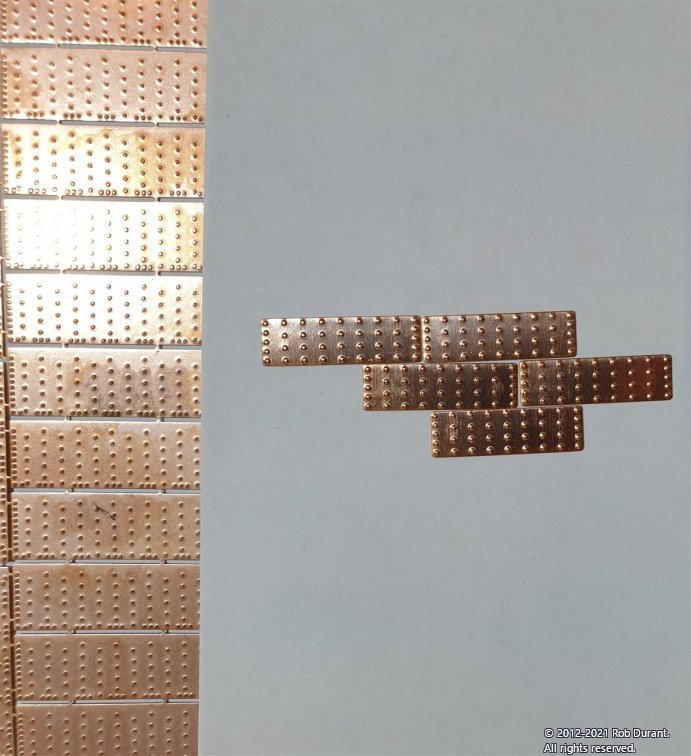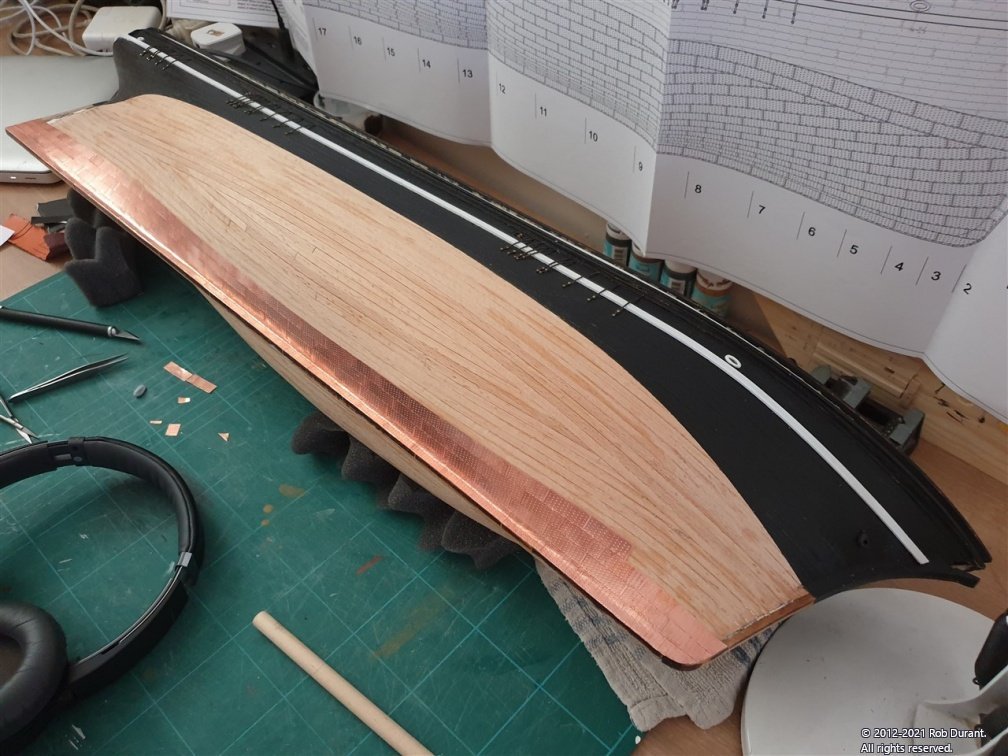-
Posts
837 -
Joined
-
Last visited
Content Type
Profiles
Forums
Gallery
Events
Everything posted by robdurant
-
Rob, You my have answered this question before, in which case I apologise, but what is the material that you're using to make the cabin sides? It seems that you are able to score it to mark the panel lines? Certainly, the effect is very convincing.
- 3,560 replies
-
- clipper
- hull model
-
(and 2 more)
Tagged with:
-
And after a while you can look back and say... "it may be wrong, but it's less wrong than it used to be." A fascinating and very skillful build and build log. Thank you for sharing this learning and growing process with us.
- 756 replies
-
- galleon
- golden hind
-
(and 2 more)
Tagged with:
-
James posted this in the sister thread (Nisha) "All I currently require for this one is the photo-etch and sails" on Sep 8th, so I'd think yes.
- 36 replies
-
- vanguard models
- Erycina
-
(and 2 more)
Tagged with:
-
What an ingenious solution for fixing the mast. She's looking great. Rob
- 269 replies
-
- panart
- amerigo vespucci
-
(and 1 more)
Tagged with:
-
If the original ship ever looked anything near as splendid as your model, what a vessel she must have been! Wonderful work!
- 2,623 replies
-
- heller
- soleil royal
-
(and 9 more)
Tagged with:
-
Thanks Bob, Jobbie. Hopefully have some more progress to show soon.
- 286 replies
-
And the port side is now plated as well. Just the line along the keel and up the bow, and the rudder to plate now, but I shall take a breather first. I had to slightly sand the notches in the display stand to make space for the copper tiles which make the keel marginally wider. A couple of pictures, one of which shows the Vanguard Models Zulu "Lady Isabella" for size comparison... Both are almost identical scale (1:64 for the "Lady Isabella", to 1:63 for "Stefano") I have to say, as much as these copper plates are brilliant, I shalln't be sad to have a break from sticking them on individually for a while!
- 286 replies
-
Starboard side plated.... A few more in progress shots, then the finished starboard side. The keen-eyed among you will spot a patch where I did a bit of cleaning of one of the plates... It should blend in again over time.
- 286 replies
-
Thank you I look back at her now and can't quite believe I built her! A testament to the excellent kit design and great encouragement, ideas and resources on this site!
-
Thanks for all the likes and encouragement. I thought it might be helpful to some if I described in a little more detail how I'd planned out the bands along the top of the plating, when the plates are all laid from the keel up. It presents an interesting challenge, because the shaped tiles must be laid first, then the bands along the top which overlap them. All must be done leaving enough space for the top plates to overlay the lower, and leaving a smooth waterline, and without too much distance between the plating below the bands, and the waterline so that messy gaps are left. In addition, one can't simply leave full tiles underneath the top bands as they have raised rivet detail which will raise them unevenly. Hence they must be trimmed. I wondered whether I might hammer down the detail, but I was unconvinced that I'd manage to do that on the rivets in question without completely destroying the visible area of the tiles. Here's how I managed it. I measured the width of the bands at the top, and marked that width down from the waterline minus two millimetres. That gave me the line I wanted the plating to finish at below the bands. Once the lower plates reached that line they are now being cut to follow that line. The lower band can then be started overlapping those plates slightly, and leaving 6mm for the upper band. Hopefully that makes sense. At each sense, I'm making sure I'm measuring again carefully and checking as I go. I'm using 6mm masking tape to keep a nice neat space for the top band (which are the tiles with rivets on the top AND bottom) to finish off. This should, hopefully result in a nice neat line. The waterline painted will be the guide for this. Here are the results so far... The first photo shows the lower plating cut to the pencil mark (which shows the bottom extent of the two bands, minus the overlap). The first two plates of the lower of the two top bands have been added, with the yellow masking tape giving a guide to make sure sufficient room is left for the top of the two top bands. The second photo is the same work but from the stern to show the sweep as it goes forward. And a couple of angles of progress so far. These plates are quite simply cut where necessary with little scissors, so with a little care the job is proving relatively straightforward. I've also realised that the photo etch tags can be easily cut with a scalpel to remove them from the main sheet without any bending. So that's now my preferred method of doing that. Once done, they are then trimmed and separated with tiny sewing scissors. Happy building! Rob
- 286 replies
-
I've been gradually plodding along with the copper plating. This would have been faster, but I got distracted with another small kit, and took a holiday... The copper-plating has two rows that run at the top parallel to the waterline. I've used masking tape to mark the bottom of that band (with 2mm to play with), so that I know where to stop the lower bands. These lower bands will be cut to fit the lower edge of this masking tape, and then the two top rows added to finish the job. So the masking tape finishes 13mm below the waterline. It's worth noting that this isn't 13mm vertically, but 13mm as the plates are laid... a fairly different measurement by the time you get towards the stern.
- 286 replies
-
Hi Tim Yes I am at Corsham Baptist. We planted a church 6 years ago just up the road and I spend most of my time serving that congregation. Ministry has had its fair share of challenges and unexpected opportunities over the past year. But I think we’re doing okay. Hope you, your family and your church are doing well too. I appreciate your prayers very much and have prayed for you this morning too. One of the appealing things about this hobby to me is that if I have a time when ministry doesn't allow any work to happen on the boat, it just wants patiently and I can pick it up again when I'm ready. Quite rightly family and faith come first I'm glad you like Ethalion. She's still under a plastic sheet waiting for a display case. Rob
-
From one time-poor church minister to another, that's a very handsome vessel you have there. The detailing around the stern quarter - especially the windows look very fine, and I really like the colour scheme with the copper bottom and the blue accents on the upper works. Do keep posting your progress Rob
-
A very good question. To be honest I don't know, but it sounds plausible. Perhaps someone here can tell us.
- 286 replies
-
Very nice that jig seems to be producing very good results.
- 17 replies
-
- Cuauhtemoc
- Mexico
-
(and 3 more)
Tagged with:
-

uploading pictures
robdurant replied to David56's topic in Using the MSW forum - **NO MODELING CONTENT IN THIS SUB-FORUM**
It's probably because when you copy and paste the pictures it's actually copying and pasting code which will contain style parameters (width / height / alignment, etc..) specific to Google docs which will alter how the forum displays the images. As Mark says the simple way (and certain) to get the right result is to download the image to your computer then upload it separately. This avoids the code being carried across. The other possibility is that you may be able to paste "unformatted text" which should cut out this code, but this option will probably only be available on some browsers / operating systems and you will lose any formatting (headings / bold / italic etc...) you've put into the log text you're copying at the same time. When you put the pictures into Google docs do you set the height manually? If so when the picture is shown on a desktop computer there is sufficient width for it to display with the correct aspect ratio (not squished), but when displayed in mobile mode there is perhaps less than a third of the screen width and so it honours the height setting you selected and resizes the width so it appears squished. The simplest way to avoid this is to resize your photos before you upload them and then leave any further resizing (i.e. for mobile display) to the browser. It will show the image at full size on a desktop and smaller but at the correct aspect ratio on a mobile. If you edit the posts you have made you should be able to edit the settings for height and width on each image to fix the aspect ratio, but hard coding the values will cause the image to go off the side of the screen on mobiles or to be very small on the desktop. Better would be to remove the height and width settings entirely and let the browser do the work. -
Wow! What a brilliant job you've done of this kit. The quality of work at every stage is very apparent. Looking forward to seeing the finished photos, especially with the ingenious and very effective boat stand you've found. Just sad I didn't find this log earlier. Will you be moving back onto the ARM Cuauhtémoc now? She looks like a very handsome vessel indeed. Rob
- 33 replies
-
- Artesania Latina
- Whaleboat
-
(and 3 more)
Tagged with:
-
Thanks Eurus, and Jason. You ask and we deliver 😁 My digital micrometer tells me I've been tricked by an optical illusion... the plates are all the same height. Nevertheless, there are right hand, left hand, and finishing plates. Here are some close-ups of each... Right-hand... The Left-hand plates... And the finishing plates (because they overlap you need plates with rivets along the top and bottom to finish off the effect...) Finally, a comparison between these (amazing!) MarisStella copper tiles (on the left), and the Caldercraft ones I used on Ethalion (which I found fine, but are clearly not as refined as these ones). I don't have any Amati tiles to compare, but I've heard these are also very good. You can see that the rivet detail is much more pronounced on the Caldercraft tiles, and they also have rounded corners. Because they are not -handed, it's hard to overlap them, and so the rounded corners result in a tiny diamond gap where they are butted up against each other. I've also noticed, already, that the overlap makes it much more forgiving to go round curves with the MarisStella tiles. They're also a bit bigger, so they cover the area more quickly. All in all, they're an improvement. The MarisStella tiles seem to tarnish quite quickly, but I'm hoping if I'm careful with the superglue, and I give it a good clean when I'm done, over time this will result in a pleasing patina.
- 286 replies
-
Hi all, Just back from a lovely holiday, camping up in the Midlands (of the UK), but before I went I did manage to make a little start on the coppering of Stefano. She now has four bands of the starboard copper tiles. I was wondering how I'd get on with this, as they have to be cut out individually, but it was fine. I used some little sewing scissors to cut the ends and then bent a row off the rest of the fret. The scissors were then used to separate them and trim excess sprue. They overlap beautifully (being -handed), and the whole process is well described on the plans. Here's progress so far. (I put a little card in using carpenter's glue to make up the over-narrow stern and prevent a dip in the plates... it'll all be invisible, so only myself and anyone who stumbles upon this topic will ever know 😇 ) I'm quietly optimistic about how this is all going to work out. At some point I shall need to put the rows along the top, but I thought I'd put this off for a little while as I got used to the tiles themselves. It's worth nothing that the top row has rivets along the top AND bottom... also, there are specific tiles to go under the keel. Again, with rivets on both sides, and I think they're a little narrower, perhaps.
- 286 replies
-
Painstaking work but the results speak for themselves. She's looking great! Really nice progress.
- 310 replies
-
- Diana
- Caldercraft
-
(and 1 more)
Tagged with:
About us
Modelshipworld - Advancing Ship Modeling through Research
SSL Secured
Your security is important for us so this Website is SSL-Secured
NRG Mailing Address
Nautical Research Guild
237 South Lincoln Street
Westmont IL, 60559-1917
Model Ship World ® and the MSW logo are Registered Trademarks, and belong to the Nautical Research Guild (United States Patent and Trademark Office: No. 6,929,264 & No. 6,929,274, registered Dec. 20, 2022)
Helpful Links
About the NRG
If you enjoy building ship models that are historically accurate as well as beautiful, then The Nautical Research Guild (NRG) is just right for you.
The Guild is a non-profit educational organization whose mission is to “Advance Ship Modeling Through Research”. We provide support to our members in their efforts to raise the quality of their model ships.
The Nautical Research Guild has published our world-renowned quarterly magazine, The Nautical Research Journal, since 1955. The pages of the Journal are full of articles by accomplished ship modelers who show you how they create those exquisite details on their models, and by maritime historians who show you the correct details to build. The Journal is available in both print and digital editions. Go to the NRG web site (www.thenrg.org) to download a complimentary digital copy of the Journal. The NRG also publishes plan sets, books and compilations of back issues of the Journal and the former Ships in Scale and Model Ship Builder magazines.

